Abstract
1. Electrical activity of neuromuscular junctions of the frog was studied in a medium (Ca-Ringer) whose Na ions had been entirely replaced by Ca.
2. Spontaneous miniature end-plate potentials (m.e.p.p.s) of reduced amplitude are recorded in this abnormal ionic environment, and graded end-plate potentials can be elicited by applying depolarizing current pulses to the pre-junctional parts of the nerve.
3. Addition of 5 mM tetraethylammonium (TEA) to the Ca-Ringer causes the appearance, in almost all-or-none fashion, of very large e.p.p.s (up to 45 mV in amplitude) in response to nerve stimulation.
4. These `giant' e.p.p.s occur despite the curarizing action of TEA (and its depressing effect on the amplitude of m.e.p.p.s) and they persist after application of tetrodotoxin.
5. After several hours exposure to Ca-Ringer, spontaneous end-plate activity gradually declines, and eventually evoked e.p.p. responses fail. On return to normal Na-Ringer, spontaneous end-plate activity is quickly resumed, but the potentials have an abnormal, very wide, amplitude distribution.
6. The results are discussed, in conjunction with relevant work on the squid giant synapse, in terms of the `calcium hypothesis' of transmitter release.
Full text
PDF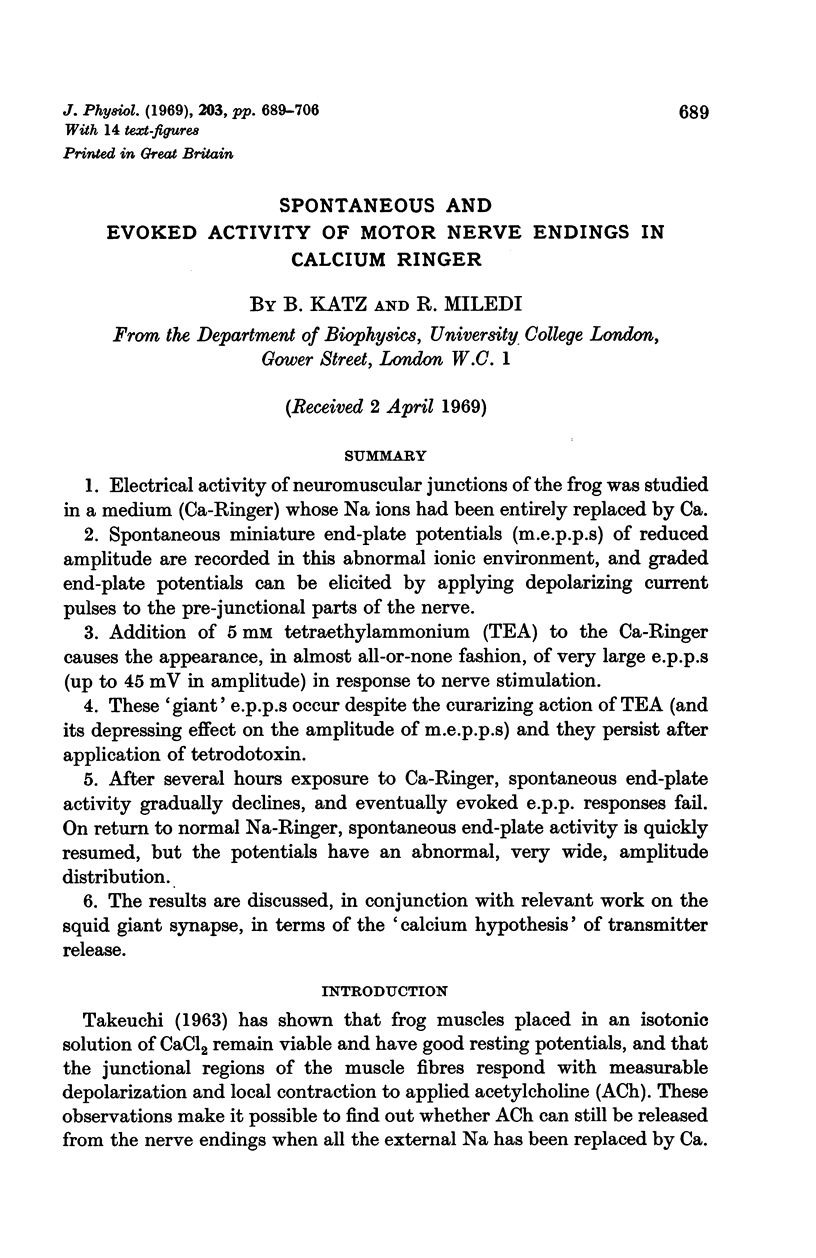
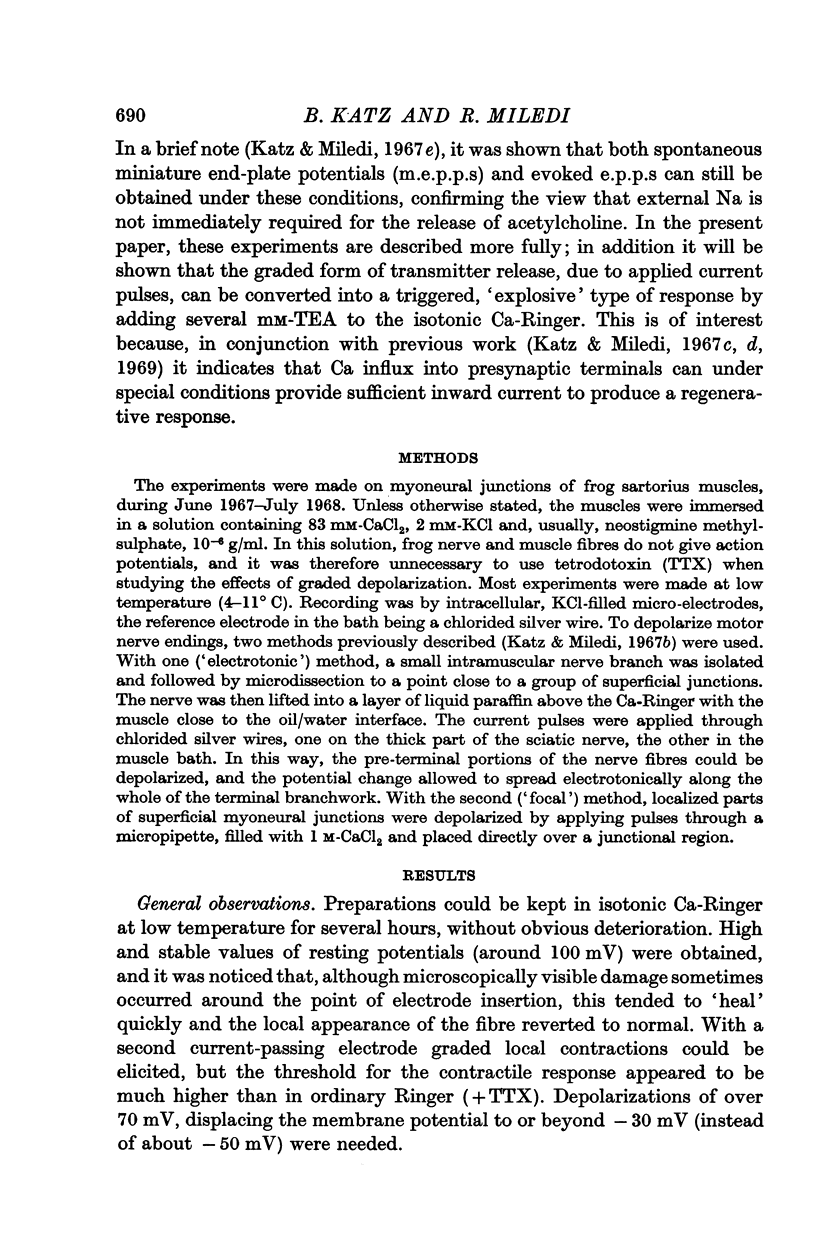
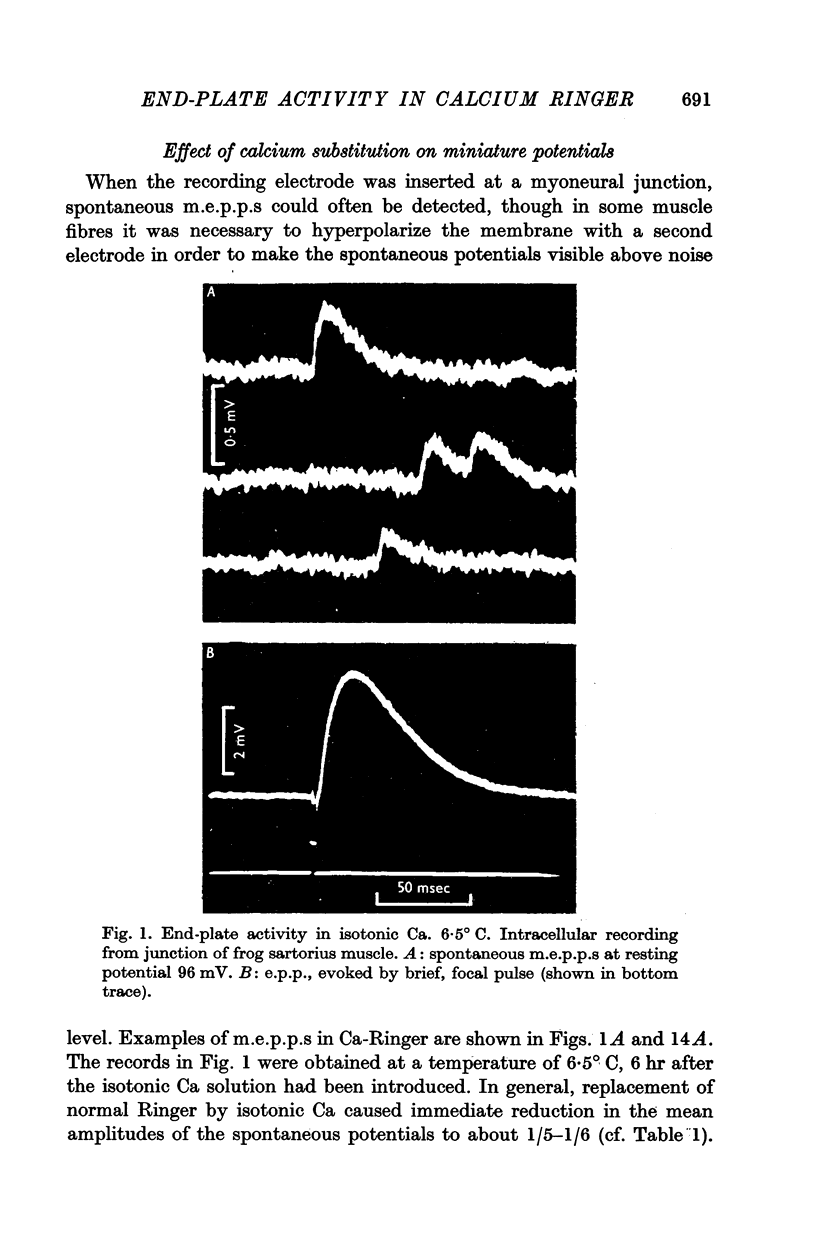
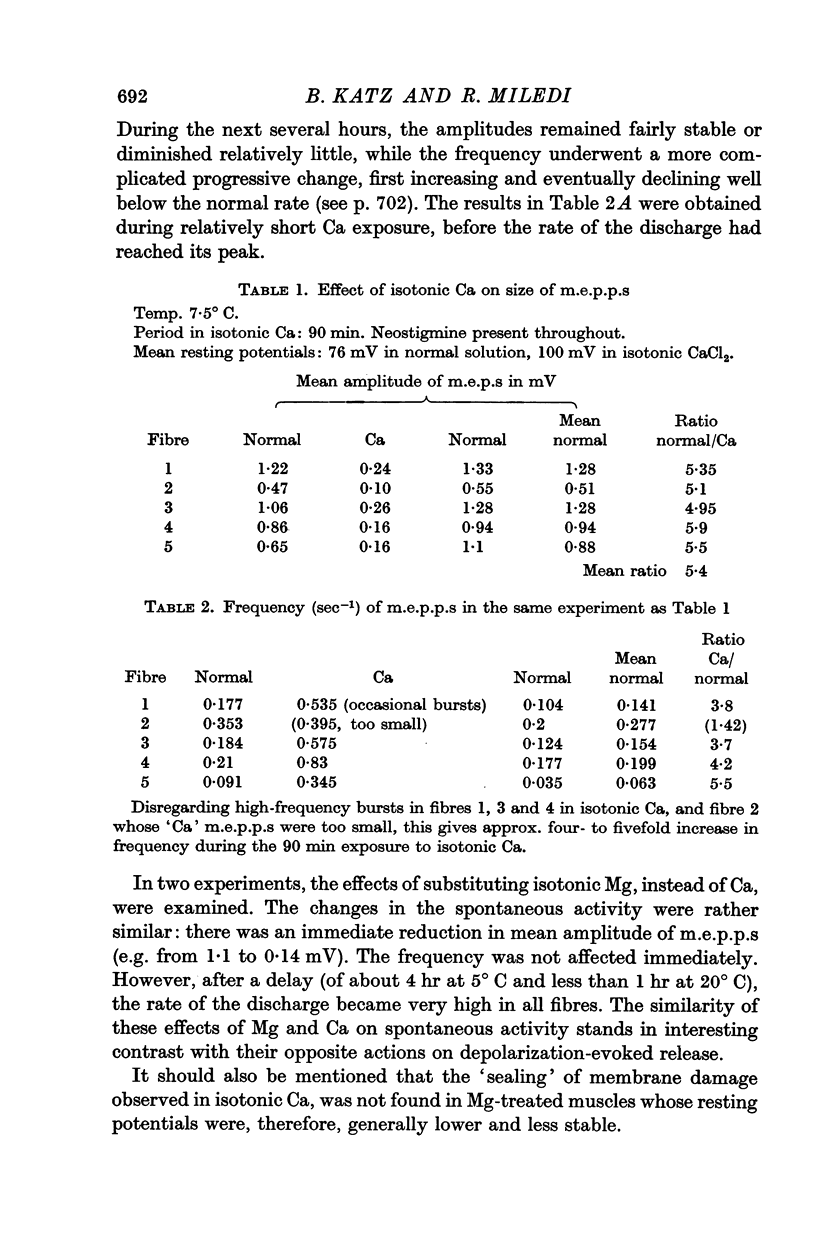
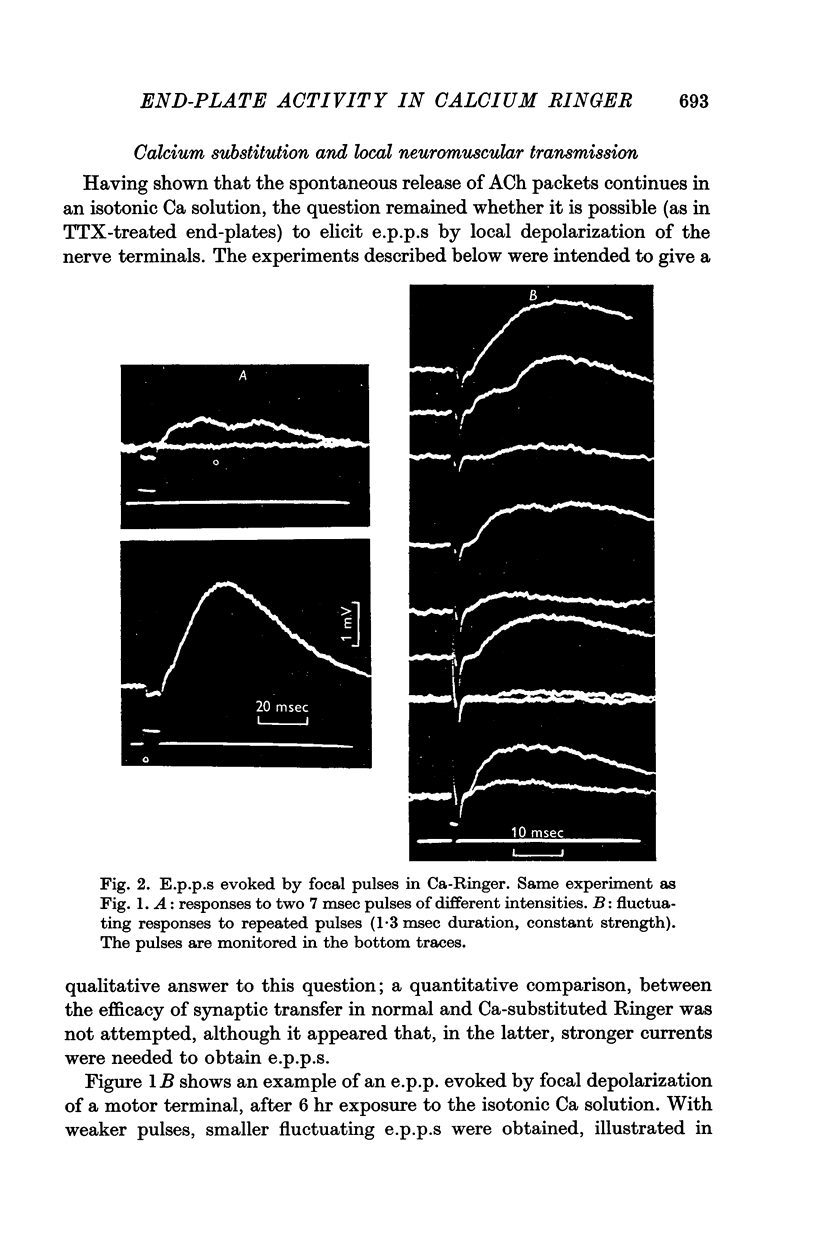
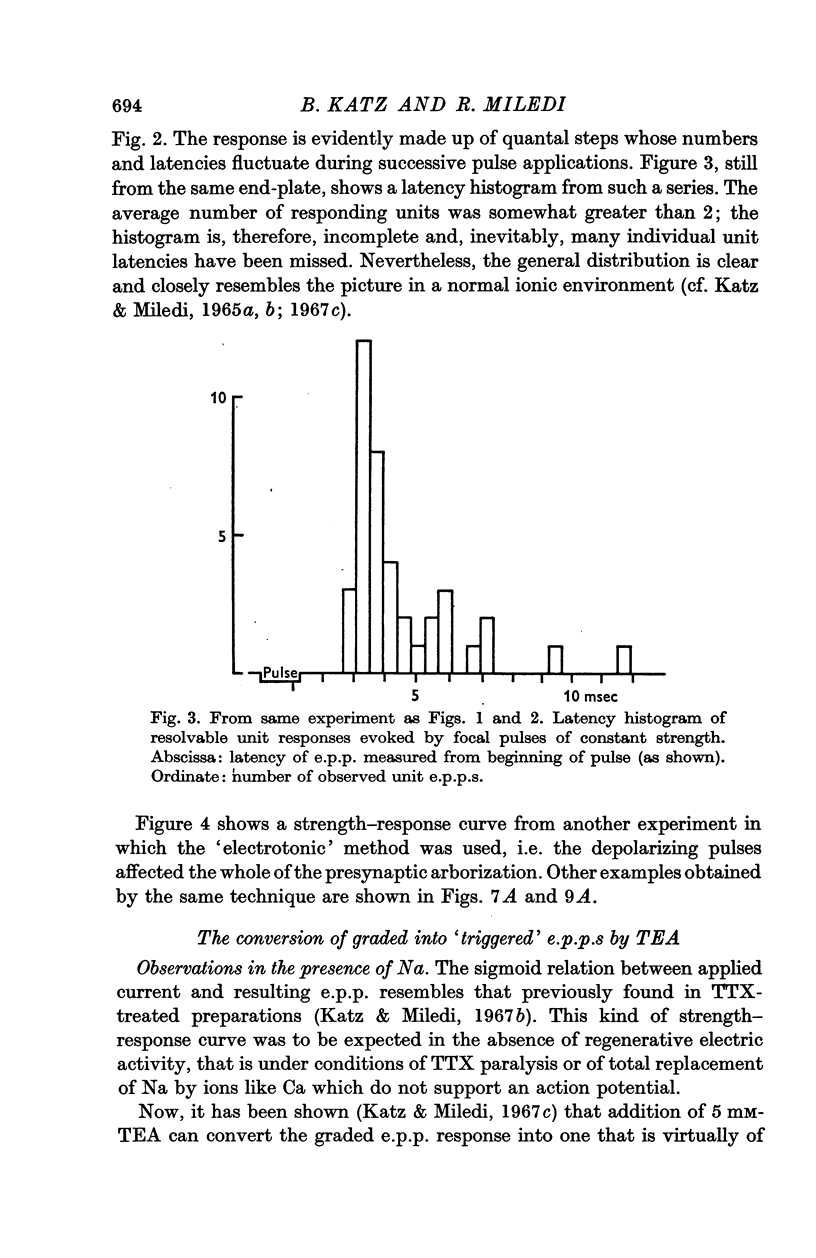
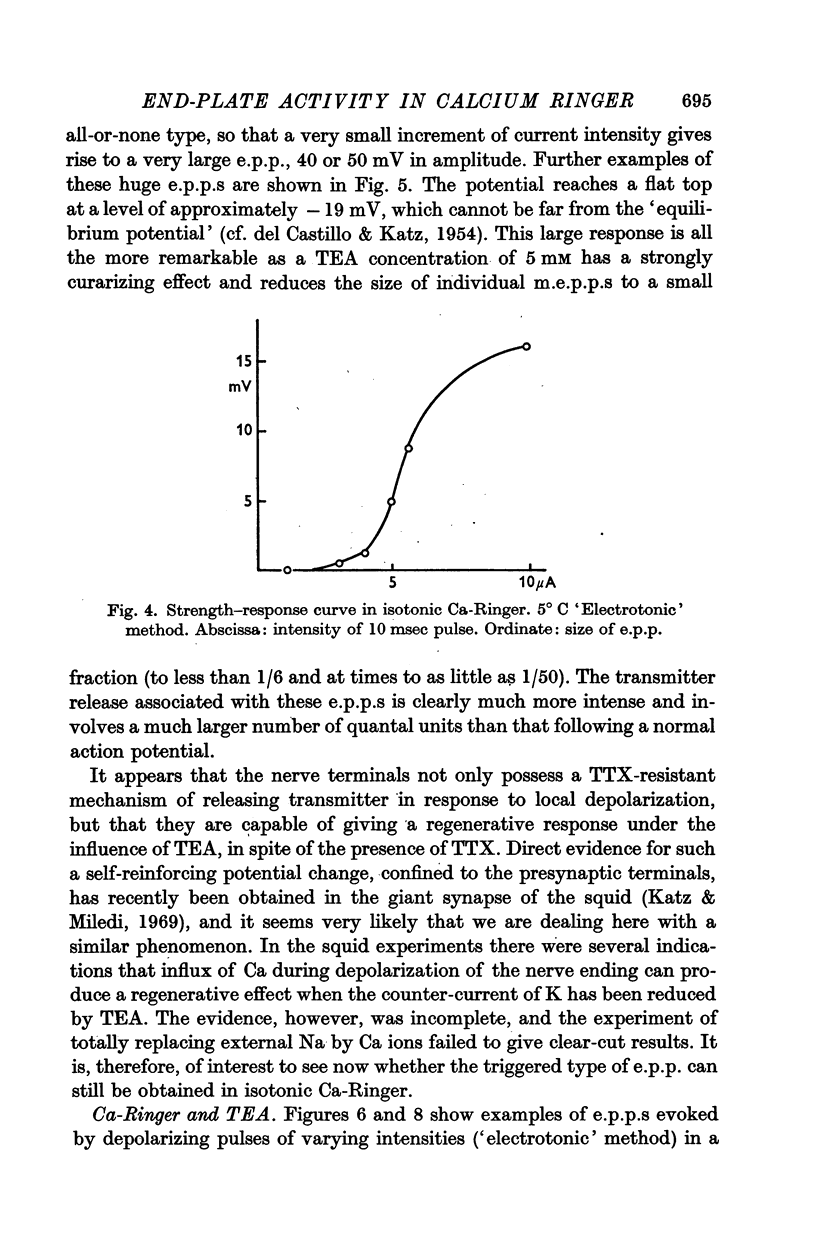
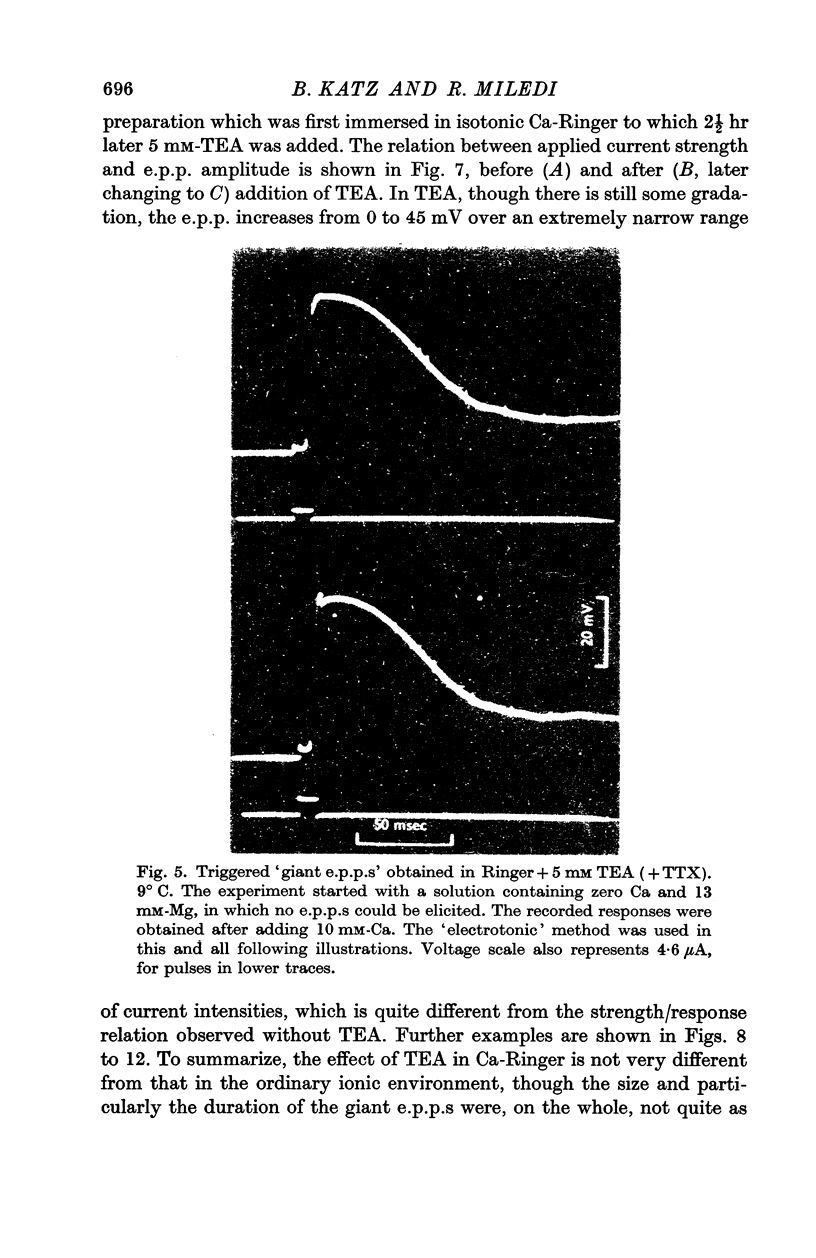
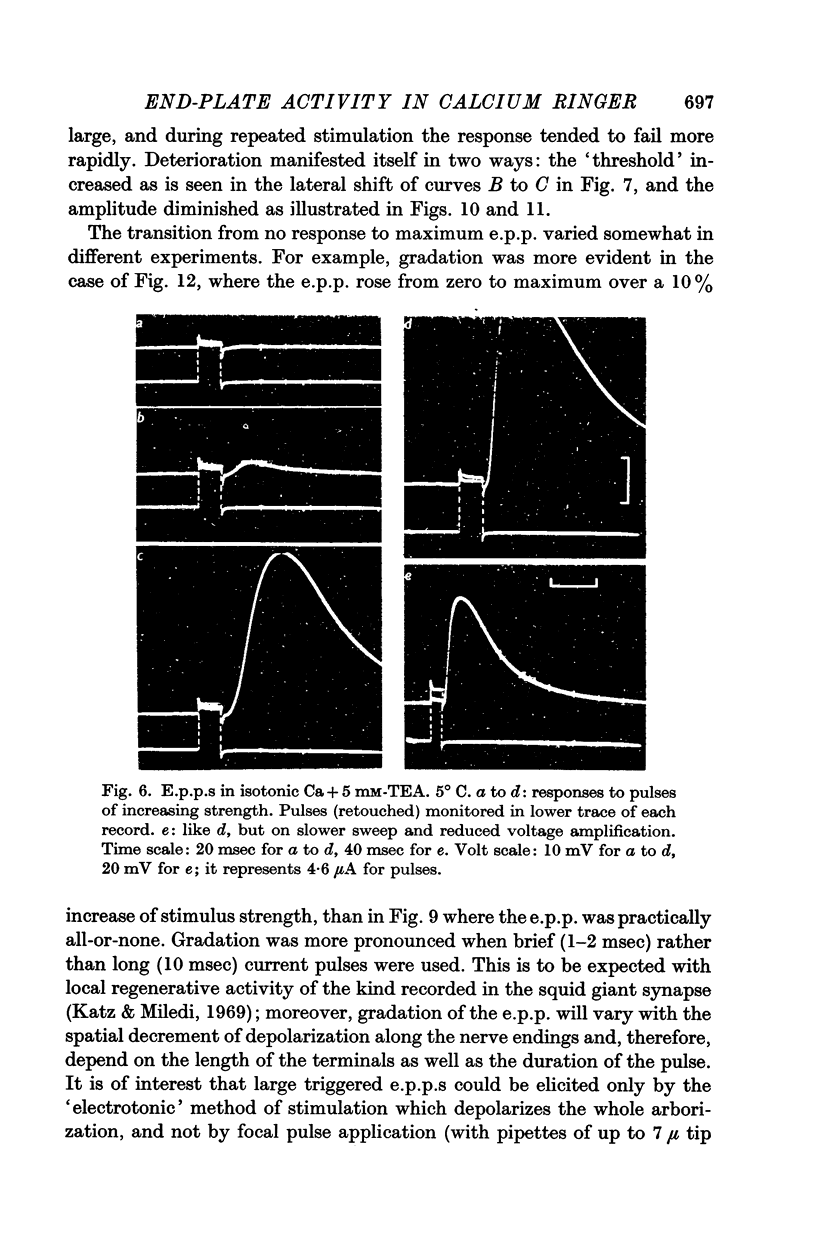
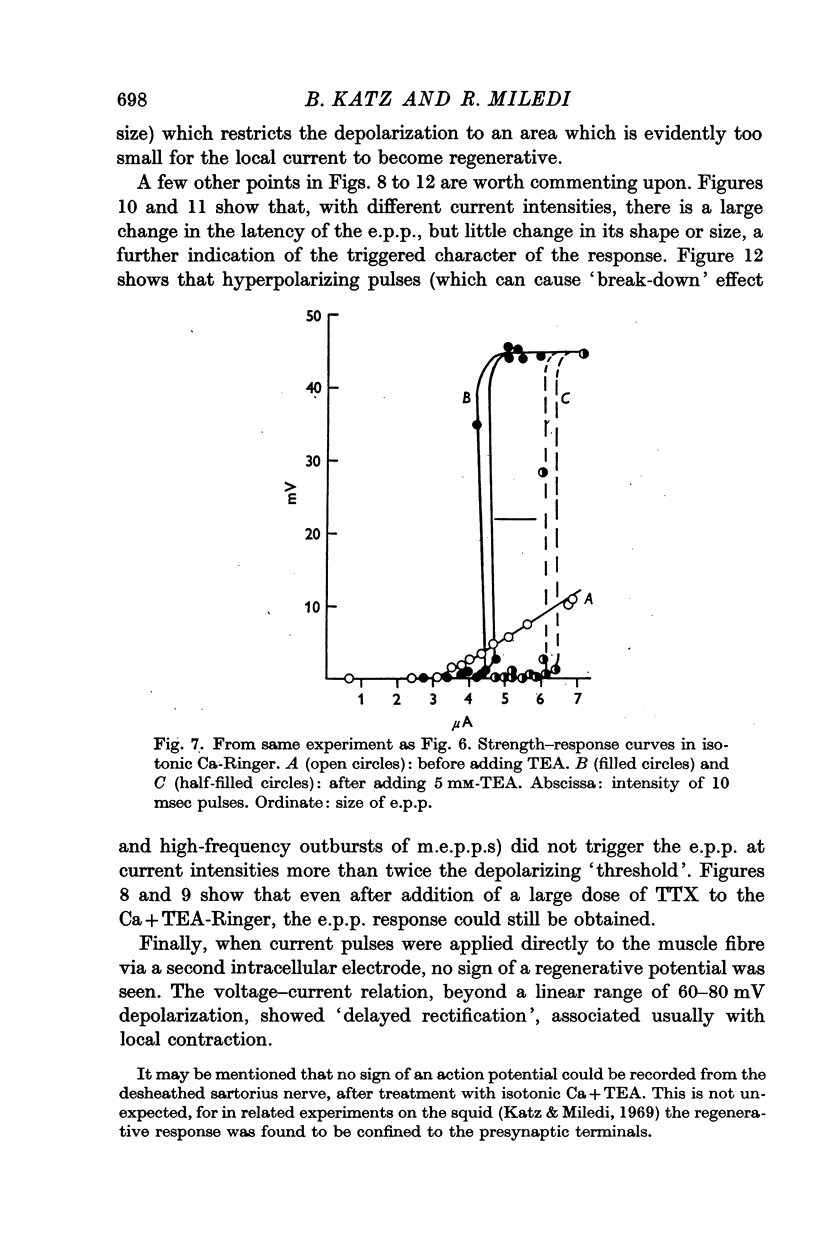
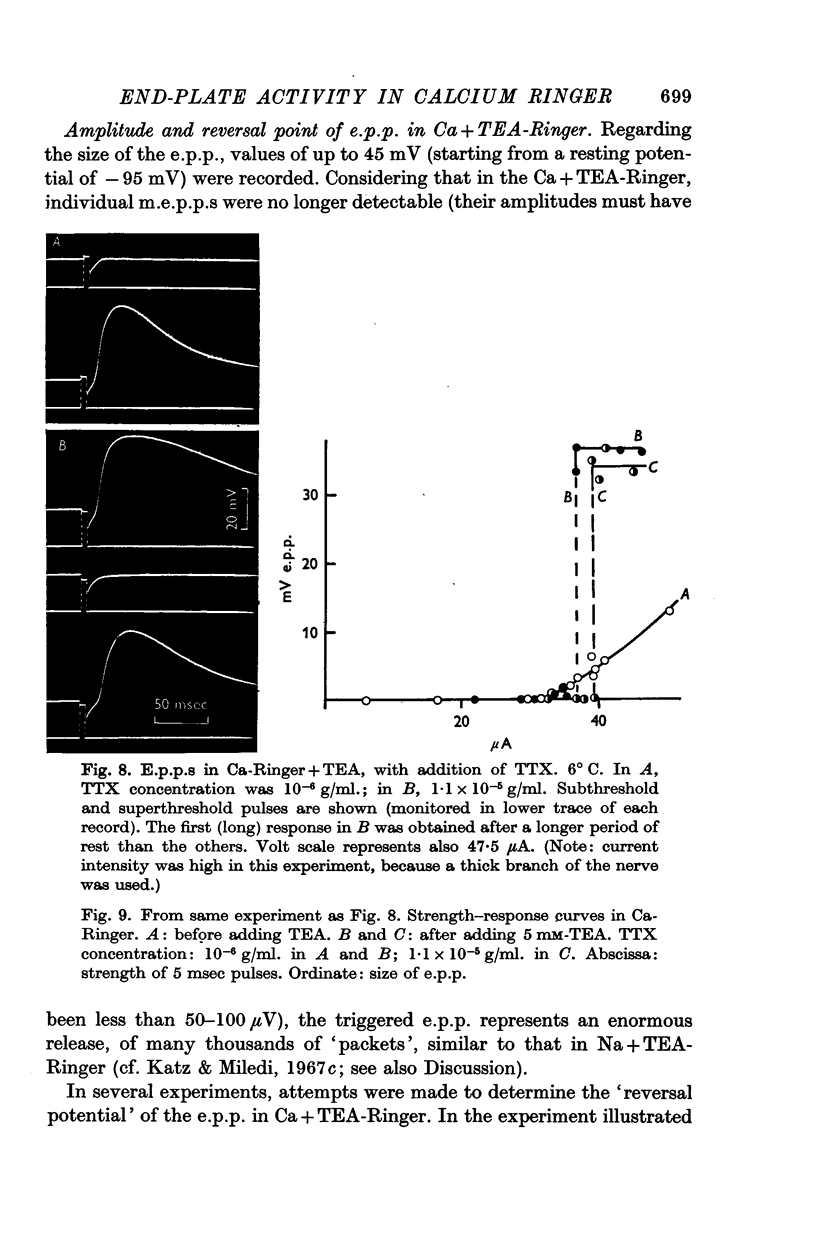
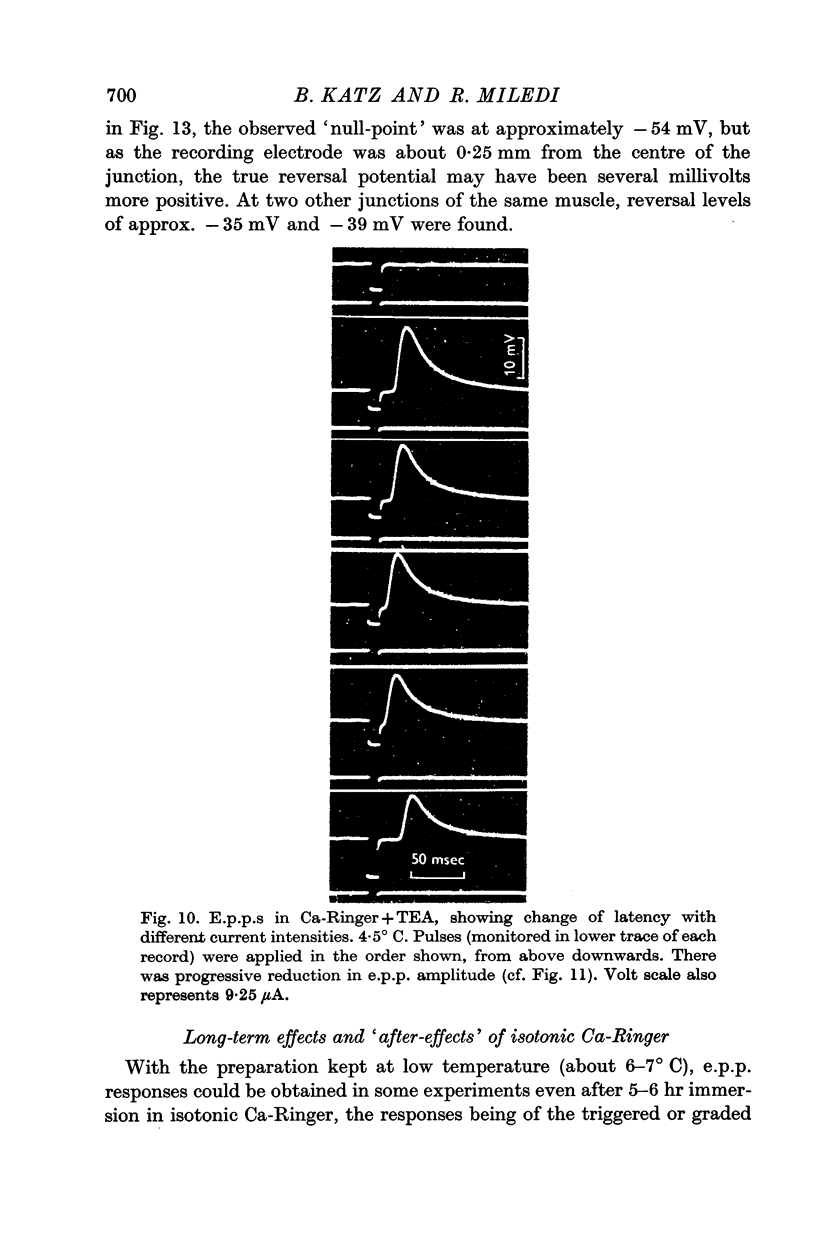
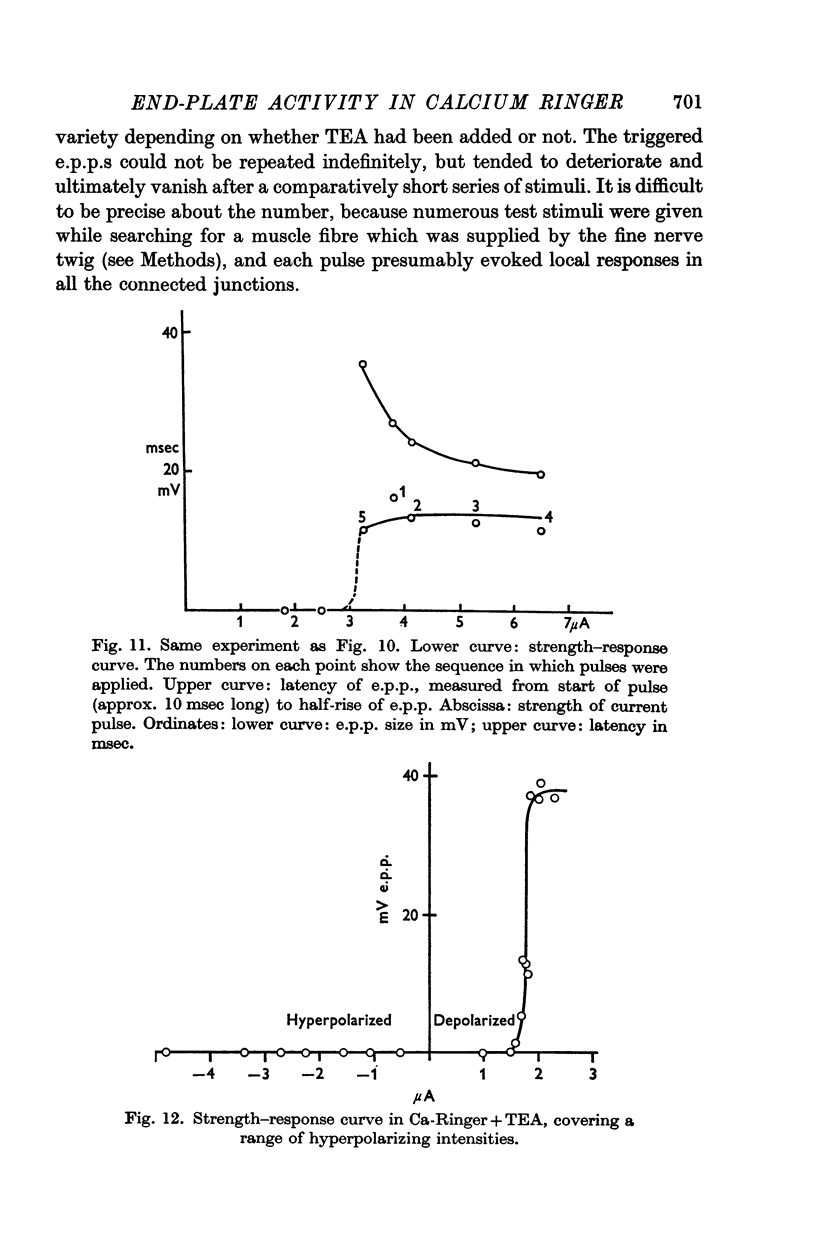
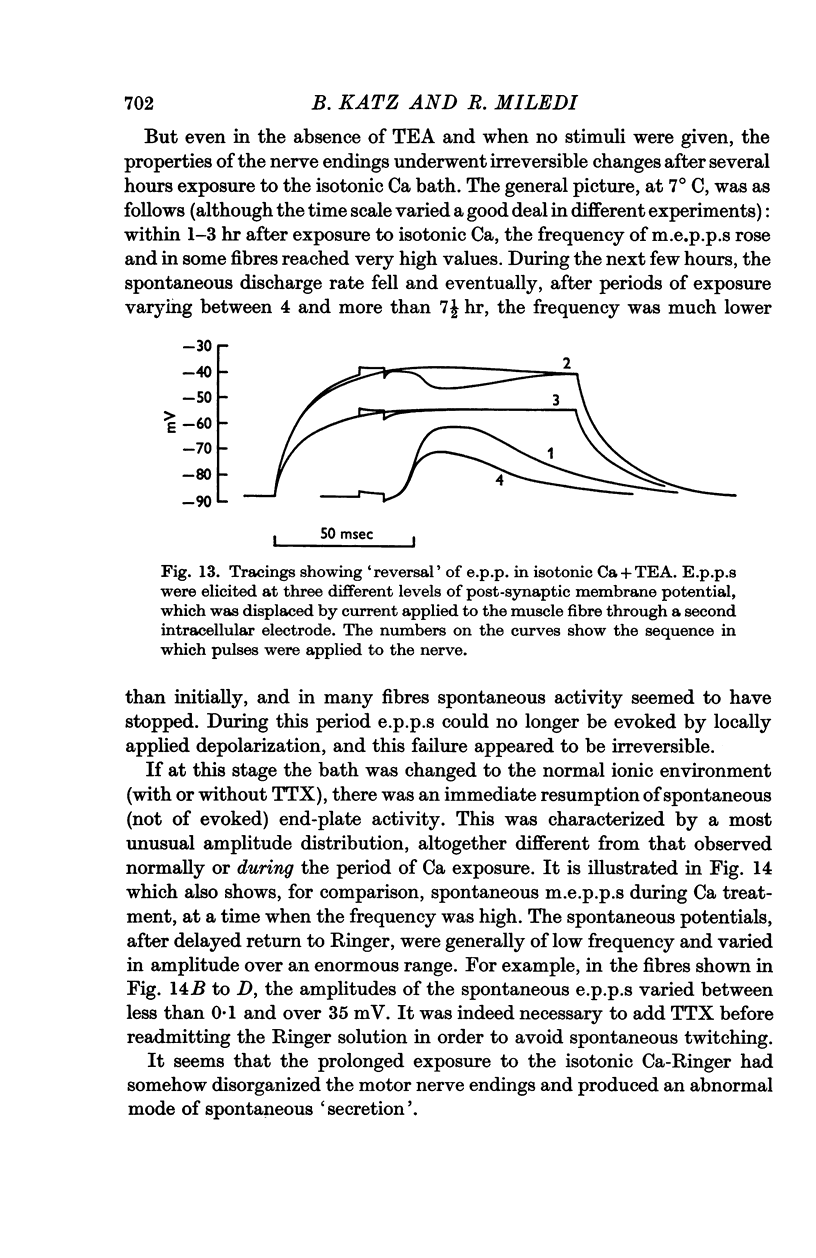
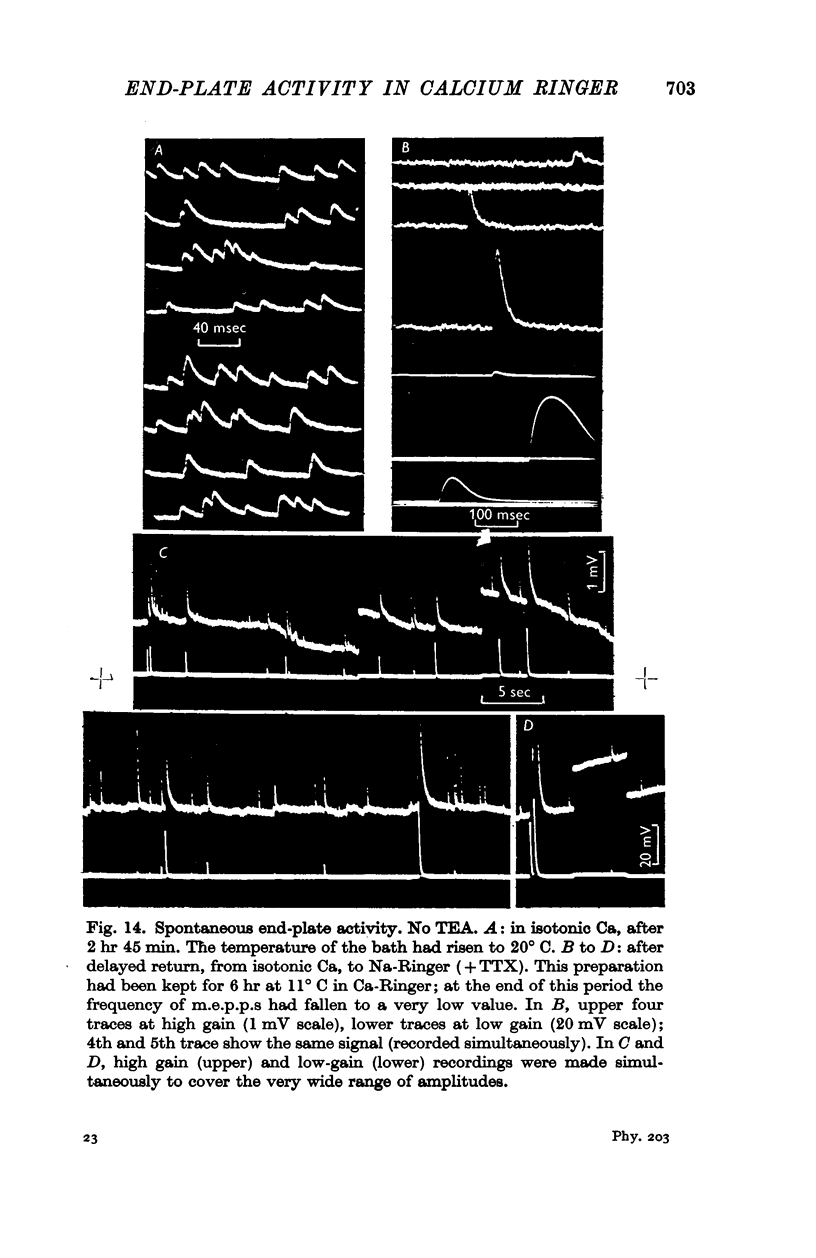
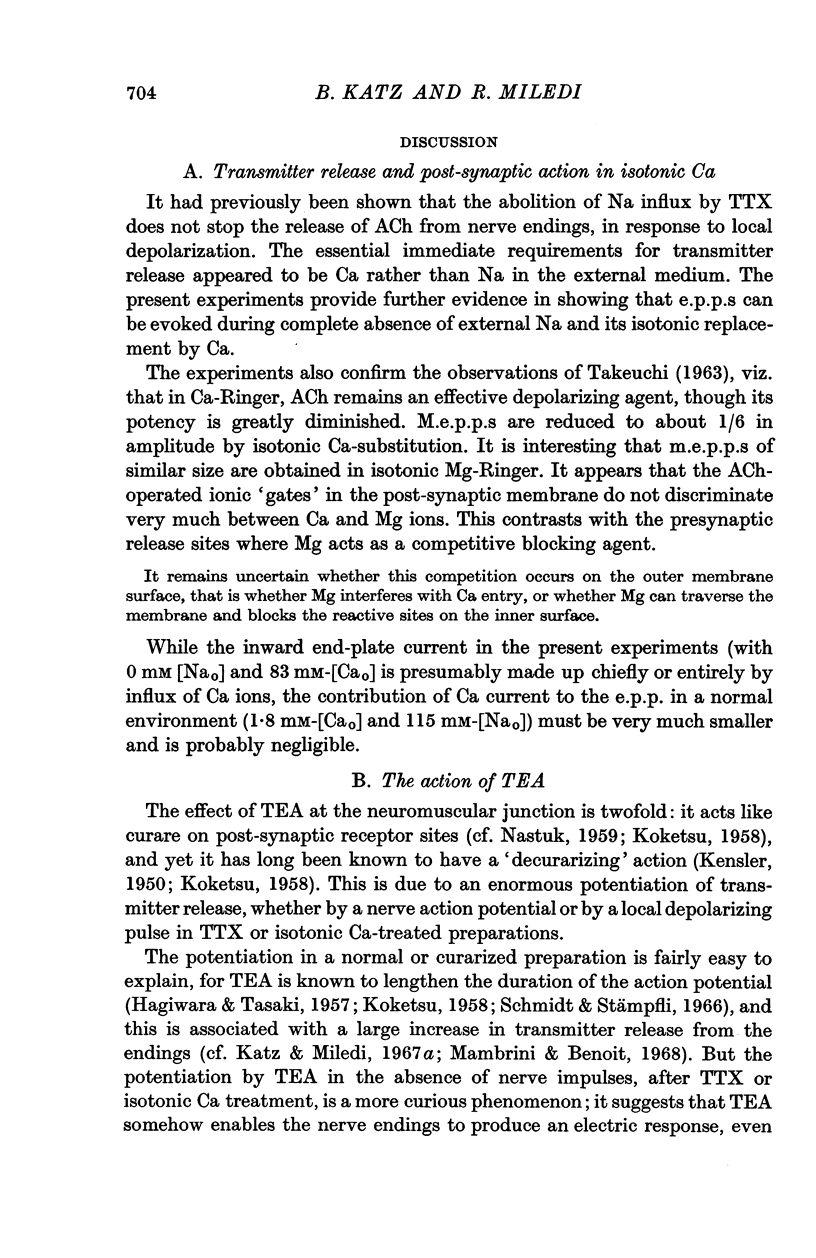
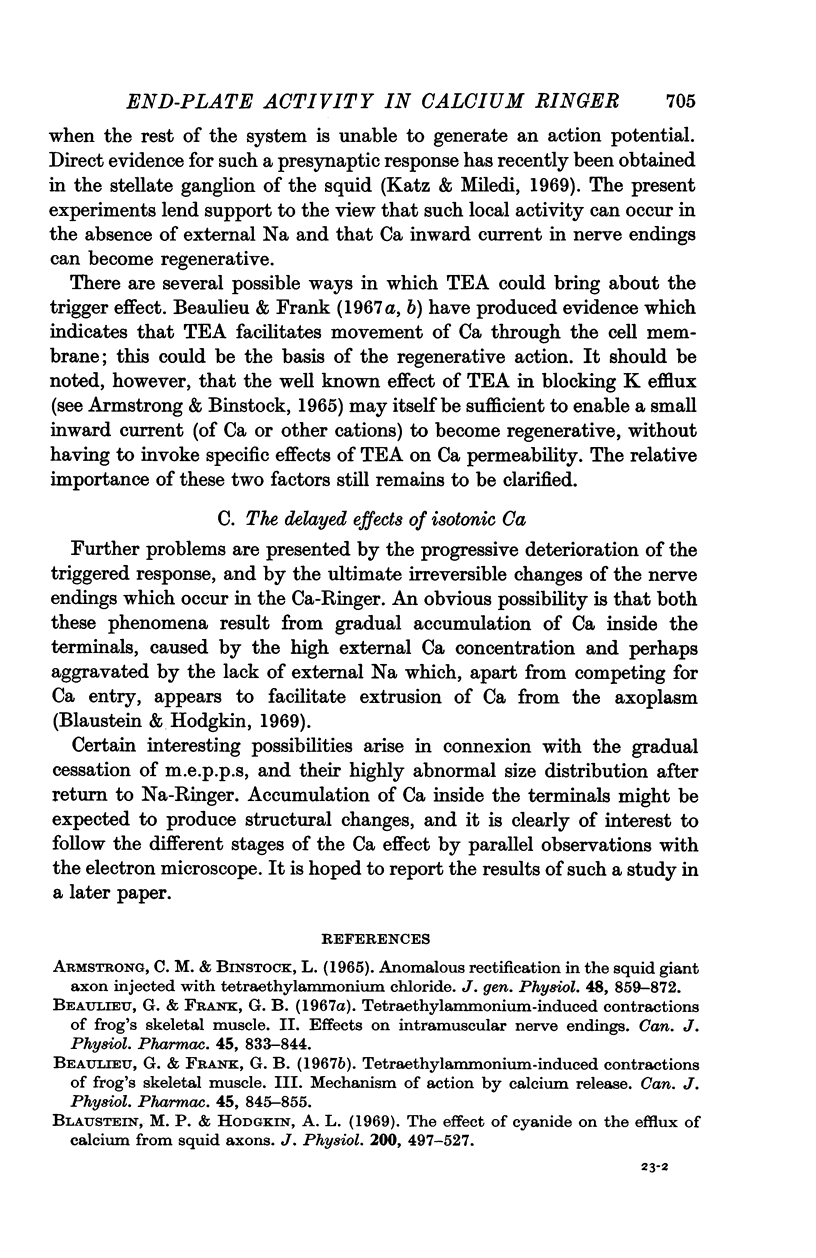
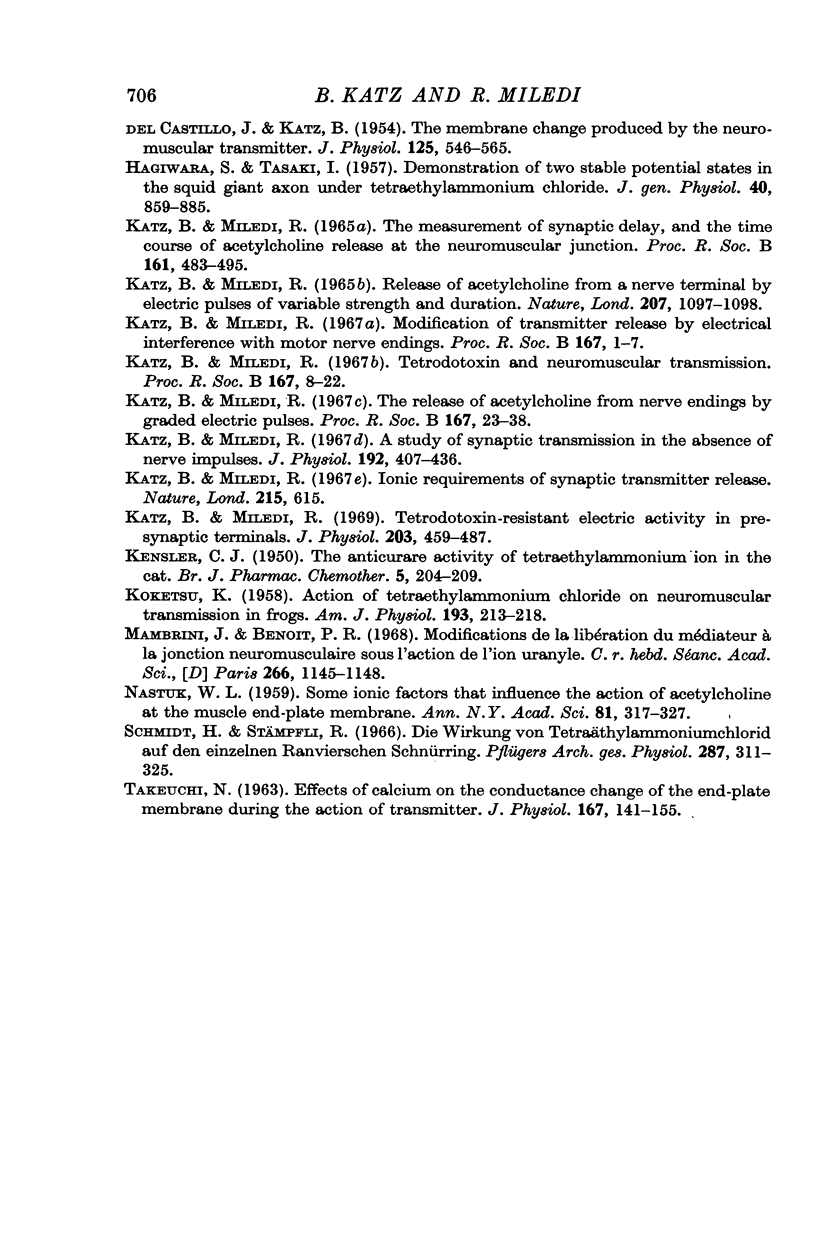
Selected References
These references are in PubMed. This may not be the complete list of references from this article.
- ARMSTRONG C. M., BINSTOCK L. ANOMALOUS RECTIFICATION IN THE SQUID GIANT AXON INJECTED WITH TETRAETHYLAMMONIUM CHLORIDE. J Gen Physiol. 1965 May;48:859–872. doi: 10.1085/jgp.48.5.859. [DOI] [PMC free article] [PubMed] [Google Scholar]
- Beaulieu G., Frank G. B., Inoue F. Tetraethylammonium-induced contractions of frog's skeletal muscle. II. Effects on intramuscular nerve endings. Can J Physiol Pharmacol. 1967 Sep;45(5):833–844. doi: 10.1139/y67-098. [DOI] [PubMed] [Google Scholar]
- Beaulieu G., Frank G. B. Tetraethylammonium-induced contractions of frog's skeletal muscle. 3. Mechanism of action by calcium release. Can J Physiol Pharmacol. 1967 Sep;45(5):845–855. doi: 10.1139/y67-099. [DOI] [PubMed] [Google Scholar]
- Blaustein M. P., Hodgkin A. L. The effect of cyanide on the efflux of calcium from squid axons. J Physiol. 1969 Feb;200(2):497–527. doi: 10.1113/jphysiol.1969.sp008704. [DOI] [PMC free article] [PubMed] [Google Scholar]
- DEL CASTILLO J., KATZ B. The membrane change produced by the neuromuscular transmitter. J Physiol. 1954 Sep 28;125(3):546–565. doi: 10.1113/jphysiol.1954.sp005180. [DOI] [PMC free article] [PubMed] [Google Scholar]
- KATZ B., MILEDI R. THE MEASUREMENT OF SYNAPTIC DELAY, AND THE TIME COURSE OF ACETYLCHOLINE RELEASE AT THE NEUROMUSCULAR JUNCTION. Proc R Soc Lond B Biol Sci. 1965 Feb 16;161:483–495. doi: 10.1098/rspb.1965.0016. [DOI] [PubMed] [Google Scholar]
- KENSLER C. J. The anticurare activity of tetraethylammonium ion in the cat. Br J Pharmacol Chemother. 1950 Jun;5(2):204–209. doi: 10.1111/j.1476-5381.1950.tb01008.x. [DOI] [PMC free article] [PubMed] [Google Scholar]
- KOKETSU K. Action of tetraethylammonium chloride on neuromuscular transmission in frogs. Am J Physiol. 1958 Apr;193(1):213–218. doi: 10.1152/ajplegacy.1958.193.1.213. [DOI] [PubMed] [Google Scholar]
- Katz B., Miledi R. Modification of transmitter release by electrical interference with motor nerve endings. Proc R Soc Lond B Biol Sci. 1967 Jan 31;167(1006):1–7. doi: 10.1098/rspb.1967.0008. [DOI] [PubMed] [Google Scholar]
- Katz B., Miledi R. Release of acetylcholine from a nerve terminal by electric pulses of variable strength and duration. Nature. 1965 Sep 4;207(5001):1097–1098. doi: 10.1038/2071097a0. [DOI] [PubMed] [Google Scholar]
- Katz B., Miledi R. Tetrodotoxin and neuromuscular transmission. Proc R Soc Lond B Biol Sci. 1967 Jan 31;167(1006):8–22. doi: 10.1098/rspb.1967.0010. [DOI] [PubMed] [Google Scholar]
- Katz B., Miledi R. Tetrodotoxin-resistant electric activity in presynaptic terminals. J Physiol. 1969 Aug;203(2):459–487. doi: 10.1113/jphysiol.1969.sp008875. [DOI] [PMC free article] [PubMed] [Google Scholar]
- Katz B., Miledi R. The release of acetylcholine from nerve endings by graded electric pulses. Proc R Soc Lond B Biol Sci. 1967 Jan 31;167(1006):23–38. doi: 10.1098/rspb.1967.0011. [DOI] [PubMed] [Google Scholar]
- Mambrini J., Benoit P. R. Modifications de la libération du médiateur à la jonction neuromusculaire sous l'action de l'ion uranyle. C R Acad Sci Hebd Seances Acad Sci D. 1968 Mar 11;266(11):1145–1148. [PubMed] [Google Scholar]
- NASTUK W. L. Some ionic factors that influence the action of acetylcholine at the muscle end-plate membrane. Ann N Y Acad Sci. 1959 Aug 28;81:317–327. doi: 10.1111/j.1749-6632.1959.tb49316.x. [DOI] [PubMed] [Google Scholar]
- Schmidt H., Stämpfli R. Die Wirkung von Tetraäthylammoniumchlorid auf den einzelnen Ranvierschen Schnürring. Pflugers Arch Gesamte Physiol Menschen Tiere. 1966;287(4):311–325. [PubMed] [Google Scholar]
- TAKEUCHI N. Effects of calcium on the conductance change of the end-plate membrane during the action of transmitter. J Physiol. 1963 Jun;167:141–155. doi: 10.1113/jphysiol.1963.sp007137. [DOI] [PMC free article] [PubMed] [Google Scholar]
- TASAKI I., HAGIWAR A. S. Demonstration of two stable potential states in the squid giant axon under tetraethylammonium chloride. J Gen Physiol. 1957 Jul 20;40(6):859–885. doi: 10.1085/jgp.40.6.859. [DOI] [PMC free article] [PubMed] [Google Scholar]


